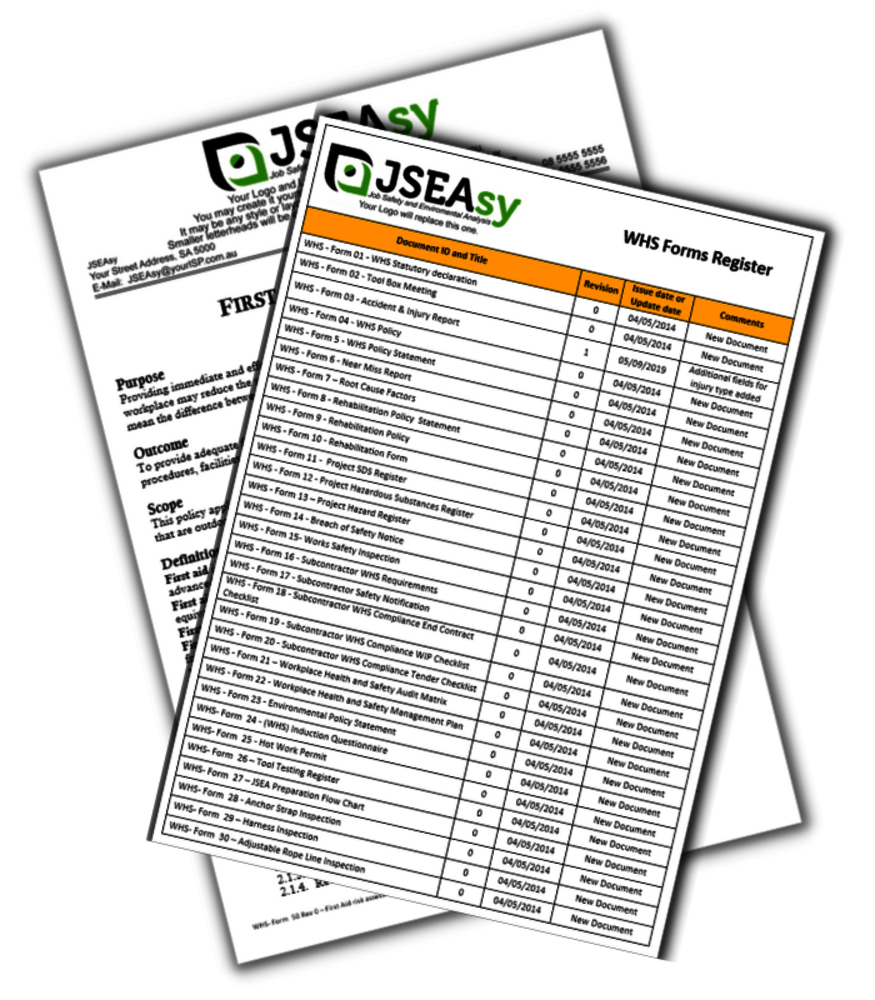WHS Form 50 First Aid risk assessment and procedure.
It is essential that you have a procedure in place to deal with Fist Aid Risk and Assessment before you need one. In some cases, it could mean the difference between life and death.
A First Aid Risk Assessment and Procedure is essential for several reasons, as it helps ensure the health and safety of employees, visitors, and anyone present in the workplace. Here’s why it’s necessary:
Identifying Workplace Hazards
Assessment of Specific Risks: Every workplace has unique hazards, such as machinery, chemicals, or physical tasks, that could cause injuries or illnesses. A First Aid Risk Assessment identifies these specific risks so that appropriate first aid measures can be put in place.
Tailored First Aid Resources: By understanding the types of injuries that might occur, the workplace can ensure that the necessary first aid supplies, equipment, and trained personnel are available to address those risks effectively.
Legal Compliance
Regulatory Requirements: Many countries and regions have laws and regulations that require employers to conduct a First Aid Risk Assessment and establish first aid procedures. Non-compliance can lead to legal consequences, including fines or penalties.
Duty of Care: Employers have a legal and moral responsibility to provide a safe working environment. Ensuring that adequate first aid measures are in place is a critical part of fulfilling this duty.
Prompt and Effective Response to Emergencies
Reducing the Impact of Injuries: In the event of an accident or medical emergency, having a well-planned first aid procedure can significantly reduce the severity of injuries or illnesses. Quick access to first aid can prevent minor injuries from becoming major ones.
Saving Lives: In cases of severe injuries or medical emergencies, such as cardiac arrest, a well-prepared first aid response can be life-saving. Knowing how to respond and having the right equipment, like Automated External Defibrillators (AEDs), can make all the difference.
Preparedness for Various Scenarios
Emergency Planning: First Aid Risk Assessments help identify the range of potential emergencies, from minor cuts to major accidents or health crises. This allows the workplace to be prepared with appropriate procedures for a variety of scenarios.
Training and Awareness: Establishing first aid procedures ensures that employees are trained and aware of what to do in an emergency, creating a more responsive and confident workforce.
Improving Workplace Safety Culture
Promoting Health and Safety: Conducting a First Aid Risk Assessment and having clear procedures in place promotes a culture of safety in the workplace. It shows that the organization prioritizes the well-being of its employees and visitors.
Encouraging Reporting and Prevention: When first aid procedures are well-defined, employees are more likely to report hazards or incidents, leading to better prevention and mitigation strategies.
Managing Remote or High-Risk Environments
Special Considerations for Remote Locations: In workplaces where access to professional medical help may be delayed, such as remote sites or high-risk environments, having a thorough First Aid Risk Assessment and procedures in place is even more critical to ensure immediate care.
In summary, a First Aid Risk Assessment and Procedure are vital components of workplace safety management. They ensure that the workplace is prepared to handle injuries or medical emergencies effectively, comply with legal obligations, and foster a culture of safety and preparedness.
This policy is also included in the JSEAsy Software Premium version

